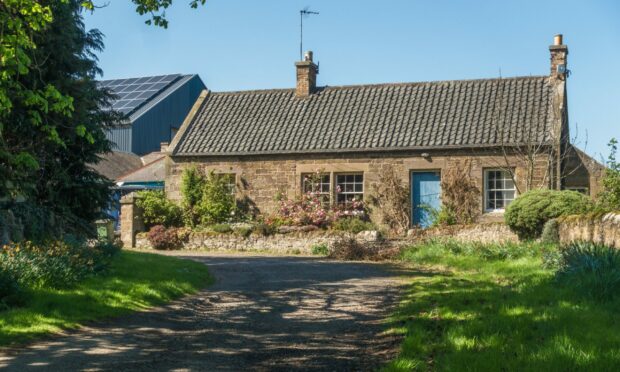Legislation and policies geared to meet the Scottish Government’s net-zero emission targets will not only influence future support for agriculture, but will also have significant consequences for housing.
Improving the energy efficiency and standard of homes is a key strand of the climate change agenda and it is proposed that housing let under agricultural tenancies, where it is part of the fixed equipment of the lease, should be brought in line with that in the private rented sector.
At the moment there are several different house condition standards that apply to homes that are owner-occupied, rented from a council or housing association, and privately rented.
Standard
Housing under agriculture holdings legislation has been exempt from some of these standards, but now the Scottish Government plans for a common standard across all housing, including that in agricultural tenancies.
A recent example of this intent was the requirement for all homes to fit interlinked fire and carbon monoxide alarms.
By 2045, the aim is for emissions of greenhouse gases from heating our homes and buildings to have all but disappeared, with space and water heating provided by zero-emission alternatives.
In the shorter term this means that all housing will be required to meet the Repairing Standard and Energy Performance Certificate Rating C, where this is technically feasible and cost effective.
Insulation
The details about what is feasible or cost effective could be crucial, as many farmhouses and cottages on tenanted holdings will be difficult and costly to insulate, particularly those that are very old and built of stone. It’s easy to agree that damp-free, warm homes with energy-efficient heating systems should be where everyone lives, but there are significant concerns about how this can be funded.
It’s well known that rural homes have the lowest energy efficiency standards in Scotland, and many will not be able to afford improvement works, particularly in old or substandard housing which is starting from a very poor level. The consequence could be that houses currently in the private rented sector are sold on to those who can afford to do the work to meet the new requirements, potentially losing more homes for local residents.
The added complication for improving homes that are a part of an agricultural tenancy is having clarity on who – landlord or tenant –is responsible for any upgrades or repairs.
Equipment
Usually where the landlord has provided a piece of fixed equipment which is subject to new compliance standards, it is normal for the landlord to fund the necessary investment needed to comply with new standards. Where the tenant has provided the piece of fixed equipment which is subject to new compliance standards, it is normally the tenant who funds the necessary investment.
It’s not always that simple, however, and sometimes these norms aren’t followed. There could also be significant consequences for tenants with post-lease agreements and those who have modern limited duration tenancies with improvement and renewal liabilities.
These implications require careful consideration and further information is required on which housing legislation applies to and governs agricultural tenancies, and which party, landlord or tenant, will be responsible for these mandatory improvements.
In addition to the new housing standards and energy efficiency targets, the recent Scottish Government consultation, A New Deal for Tenants, proposes stronger rights, greater protections against eviction, and access to greener, higher quality, more affordable housing.
I will be exploring the implications for the sector with key stakeholders with the hope it may be possible to develop a sectoral view to present to government.
Bob McIntosh is the Tenant Farming Commissioner.
